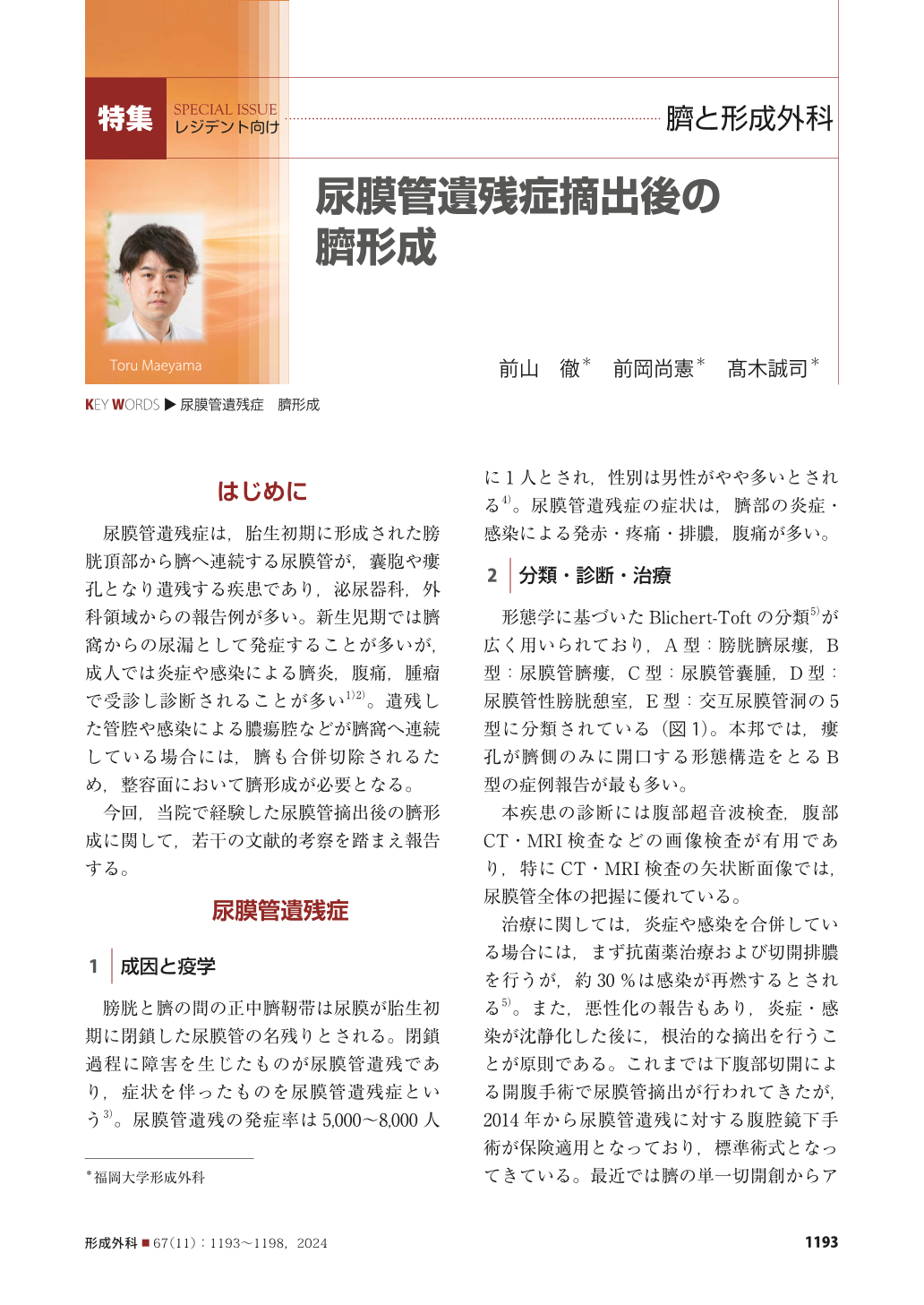Japanese
English
- 有料閲覧
- Abstract 文献概要
- 1ページ目 Look Inside
- 参考文献 Reference
はじめに
尿膜管遺残症は,胎生初期に形成された膀胱頂部から臍へ連続する尿膜管が,囊胞や瘻孔となり遺残する疾患であり,泌尿器科,外科領域からの報告例が多い。新生児期では臍窩からの尿漏として発症することが多いが,成人では炎症や感染による臍炎,腹痛,腫瘤で受診し診断されることが多い 1)2)。遺残した管腔や感染による膿瘍腔などが臍窩へ連続している場合には,臍も合併切除されるため,整容面において臍形成が必要となる。
今回,当院で経験した尿膜管摘出後の臍形成に関して,若干の文献的考察を踏まえ報告する。
We report on a case of umbilical reconstruction after urachus excision. Urachus remnants are often identified in patients at young ages, necessitating umbilical plication at the time of removal. We describe the advantages and disadvantages of the open method of post-urachus-excision umbilical reconstruction that uses artificial dermis and umbilical plication with a local skin flap in a 20-year-old female. However, epithelialization takes time due to secondary healing, and in cases with thick subcutaneous fat, it may be difficult to obtain an operative field, rendering suturing of the anterior sheath difficult. By contrast, in umbilical plication with local skin flaps, elevation of the skin flaps can provide a sufficient operative field, allowing for secure suturing of the skin flaps to the anterior sheath and the creation of a deep umbilical fossa. A disadvantage of this technique is that extraction of the skin flaps results in scarring outside the umbilical fossa. To create a good umbilical fossa, it is important to (i) conduct a thorough preoperative consultation with a urologist, and (ii) minimize the skin excision at the time of extraction.

Copyright© 2024 KOKUSEIDO CO., LTD. All Rights Reserved.


